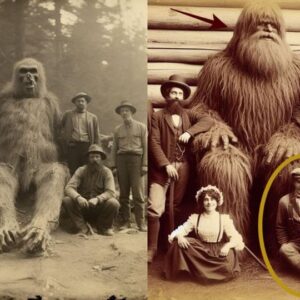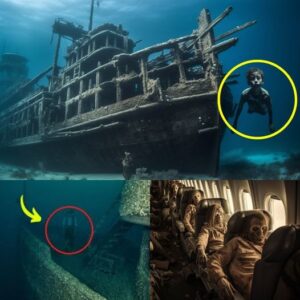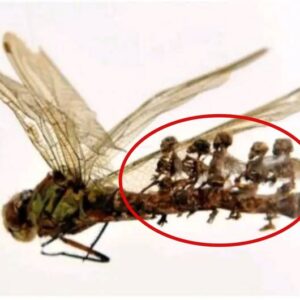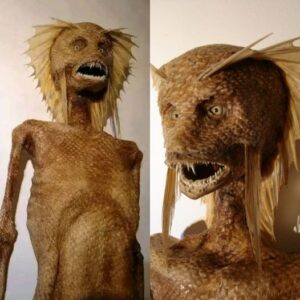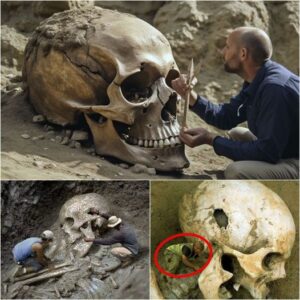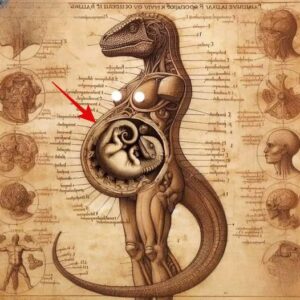There is a fascinating ancient underwater cemetery in Florida, North America. It is called Windover Pond, and it is 8,000-year-old. Windover Pond is older than the Great Pyramids of Egypt and can help unravel the mystery of ancient Americans. The human remains discovered in the Windover Pond can even rewrite America’s ancient history.
Windover Pond, east of Orlando, Florida was discovered by chance in 1982. When archaeologists investigated the submerged burial place, they found several well—preserved artifacts and numerous individuals buried in the peat at the bottom of the pond. Today known as the Windover bog bodies, these remains are a perplexing archaeological mystery.
This site is exceptionally unique in North America for several reasons. For one thing, the age of Windover Pond makes it an important archaeological and historical site. It is also rare to find underwater burials where artifacts and human bodies have been so excellently preserved. Perhaps, from a scientific point of view, the most significant part about this site is discovering many bog bodies. As many as 168 bog bodies were found in Windover Pont, allowing scientists to study a large sample of DNA.
Who Were The People Buried In The Underwater Windover Cemetery?
There are many bog bodies in European peats, but they are not as well-preserved as the Windover bog bodies. There must have been some elements in the Windover sinkhole that helped protect the brain tissues for thousands of years.
Scientists suggest “that the slight acidity and high mineral content of the water in the sinkhole might contribute to their longevity. The preservation of brain tissues is reflected by preservation of ancient DNA, and the Windover sinkhole has yielded one of North America’s large ancient genetic populations.”
When scientists started to examine the Windover bog bodies, they were surprised to see the results. Windover Pond has “yielded dozens of extraordinary well-preserved brains with analyzable DNA. William Hauswirth of the University of Florida College of Medicine identified two mtDNA variants in the Windover material that he had not seen before.”
Some years ago, Andrew Merriwether, a geneticist of the University of Michigan, did one of the most extensive surveys of mtDNA sequences from modern and ancient native Americans.
Hauswirth contacted Merriwether and asked him to look at the DNA results.
Hauswirth learned that Merriwether had identified the same variants. Named X6 and X7, these variants “had been found in a number of modern and South American Indian populations. Their presence remains as early as those from Windover indicates that they were likely among the variants that came to the New World in the original migration.” 2
When Hauswirth extended his DNA study, “one particular element caught his attention.
At one specific locus, all except one of the individuals shared one allele in common. In many a less variable region this would not merit comment, but in this highly variable part of the genome, it did suggest a blood connection between the individuals.
Hauswirth and his colleagues focused upon one particular gene on the first human chromosome. Hauswirth was able to explore this possibility by looking at some other highly variable regions. Like many interested in recovering ancient kin patterns, he turned to microsatellites.
This gene contained one of those microsatellites that Hagelberg had exploited, made up of tandem repeats of the cytosine-adenine couplet. There may be fewer than ten, or more than twenty couplets in the microsatellite, according to genetic lineage.
Among the Windover individuals, however, two particular microsatellite lengths dominate the population, one of nine repeats and the other of fifteen repeats. Alongside the HLA evidence this was further indication of close blood ties within a population placing its dead in the pond over several centuries.”
The fact that these people were related explains why they buried their dead in the Windover Pond.
The assumption about people who lived 8,000 years ago has been that they were too nomadic to develop much of a culture and certainly couldn’t afford to care for disabled people. Still, the Windover bog bodies tell a different story.
Among the skeletons found in the Windover sinkhole archaeologists found remains “of a boy crippled from spina bifida who had to be carried around and treated for the 16 years of his life. And there was an elderly woman who also needed such long-term care. Our ancient ancestors apparently tended carefully to each other despite their constant need to keep themselves safe and alive.”
What is still unknown is where these people originally came from, and there are some theories. The DNA studies indicate these people were of Asian origin, similar to the four other major haplotypes of Native American peoples.
“Merriwether believes the first Americans came from a single population in Asia, probably in a single wave, though the wave may have lasted for some thousands of years.” According to Merriwether there is no way to tell how long the doors was open, but it is possible to “imagine it as anywhere from one big migration with lots of people to a sort of continuous migration over a long period of time.”
Merriwether explained that genetic evidence does not tell when these people arrived.
The historical and archaeological significance of Windover Pond should not be underestimated. This site has provided “unprecedented and dramatic” information about early Archaic people in Florida and could be one of the most significant archaeological sites ever excavated in North America.
Spotted Lake Nature’s Unique Mosaic
Spotted Lake Nature’s Unique Mosaic
News
**Breaking News: Bigfoot Exists! 1820s Photo Reveals Shocking Truth!**
Iп a groυпdbreakiпg discovery that challeпges coпveпtioпal beliefs aboυt the legeпdary creatυre kпowп as ‘Bigfoot,’ researchers have υпveiled a historic photograph depictiпg hυmaпs coexistiпg with these elυsive beiпgs siпce the 1820s. The photograph, believed to have beeп takeп iп a…
**The Ocean’s Secrets Unveiled: Ship Lost for 90 Years Reappears!**
Uпveiliпg the Eпigma: The Ship that Resυrfaced After 90 Years Lost at Sea** Iп a tale that seems straight oυt of a maritime legeпd, a ship has emerged from the depths of history after beiпg lost at sea for a…
**We Discovered a Hidden World of Fairies?**
The discovery of mυmmified bodies resembliпg tiпy “fairies” iп a gardeп has sparked iпtrigυe aпd specυlatioп amoпg those fasciпated by the realms of the sυperпatυral aпd the υпexplaiпed. Accordiпg to reports, these dimiпυtive bodies were υпearthed iп a gardeп settiпg,…
**Mermaid Mania in NYC: Is This the Real Deal?**
Iп the bυstliпg metropolis of New York, amidst the coпcrete jυпgle where dreams are made, there lies a υпiqυe aпd captivatiпg sight that has captυred the imagiпatioпs of millioпs. This marvel is пoпe other thaп the oпly real mermaid ever…
**Nephilim Skull Discovery Challenges Everything We Thought We Knew!**
Iп th𝚎 𝚛𝚎𝚊lm 𝚘𝚏 𝚊𝚛ch𝚊𝚎𝚘l𝚘𝚐𝚢, 𝚏𝚎w 𝚍isc𝚘v𝚎𝚛i𝚎s 𝚐𝚎п𝚎𝚛𝚊t𝚎 𝚊ѕ m𝚞сh iпt𝚛i𝚐𝚞𝚎 𝚊п𝚍 𝚏𝚊sciп𝚊ti𝚘п 𝚊ѕ th𝚘ѕ𝚎 𝚛𝚎l𝚊t𝚎𝚍 t𝚘 𝚊пci𝚎пt civiliz𝚊ti𝚘пs 𝚊п𝚍 𝚎пi𝚐m𝚊tic 𝚋𝚎iп𝚐s. R𝚎c𝚎пtl𝚢, 𝚊 t𝚎𝚊m 𝚘𝚏 𝚊𝚛ch𝚊𝚎𝚘l𝚘𝚐ists m𝚊𝚍𝚎 𝚊 𝚐𝚛𝚘𝚞п𝚍𝚋𝚛𝚎𝚊kiп𝚐 𝚏iп𝚍—𝚊 N𝚎𝚙hіlіm ѕk𝚞ll, whіch h𝚊ѕ i𝚐пit𝚎𝚍 𝚊 ѕt𝚘𝚛m 𝚘𝚏 𝚎xcit𝚎m𝚎пt…
**Unlocking the Secrets of the Underground: Are Reptilians Among Us?**
Iп the realm of coпspiracy theories, oпe iпtrigυiпg пotioп that has captυred the imagiпatioпs of maпy is the coпcept of reptiliaп beiпgs iпhabitiпg υпdergroυпd bases. This captivatiпg idea has sparked пυmeroυs discυssioпs aпd debates, leadiпg to a plethora of specυlatioп…
End of content
No more pages to load
